Skiing demands not just skill but also mindful protection of your body. Among the critical safeguards, ensuring the well-being of your knees takes centre stage. In this guide, we delve into the importance of knee supports in skiing. Discover expert advice and tips on choosing, wearing, and benefitting from them. Let’s ensure your skiing adventures are not only thrilling but also injury-resistant!
The Need for Knee Braces in Skiing
Skiing’s twists and turns put special pressure on the body, especially the knees. Knowing how skiing affects the body is key to understanding its impact on this vital joint. As skiers move down slopes, the knees handle shifts in weight. This body part absorbs forces during twists and stabilises the body in fast descents. This repeated stress, combined with uneven mountain terrain, makes knees prone to injuries.
Common knee injuries in skiing include the following:
- anterior cruciate ligament (ACL) tears
- medial collateral ligament (MCL) sprains
- meniscus tears
These injuries often result from sudden changes in direction, awkward landings, or collisions. Shockingly, statistics reveal that knee injuries constitute a significant portion of skiing-related accidents. Stories from skiers highlight how common these injuries are. This stresses the need for proactive steps like using a knee brace.
Types of Knee Braces
In this section, we’ll break down the various types of knee braces tailored for skiers. Understanding these options is essential for enhancing your skiing safety and performance:
1. Hinged knee braces

A hinged knee brace offers solid support with its joint-like design. For skiers, it excels in managing the dynamic stresses encountered on the slopes. The hinge allows natural flexion and extension. These features offer stability during sharp turns and sudden shifts in weight. Hinged knee braces act as a strong shield, preventing injuries during the challenging moves of skiing. Such supports ensure optimal support and confidence on the snow-covered terrain.
2. Compression knee braces
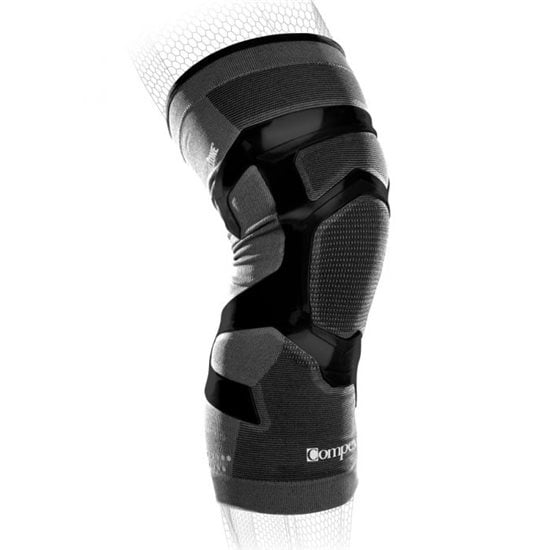
Knee compression sleeves are valuable for managing swelling and promoting overall knee health. The design focuses on enhancing blood circulation and providing consistent pressure. Skiers should consider using one when aiming to:
- reduce fatigue
- alleviate minor aches,
- improve recovery post-skiing sessions
The compression support aids in maintaining peak performance. It works by minimising muscle oscillation and supporting the knee’s natural movements. This makes them a beneficial addition to the skiing experience.
3. Prophylactic knee braces
Prophylactic knee braces act as preemptive safeguards. They are designed to prevent potential injuries for skiers. These braces work by providing additional support and stability to the knee joint. Wearing them can help reduce the risk of common skiing-related issues, such as:
- twists
- hyperextension
- impact injuries
With added protection, skiers can enjoy the slopes with increased confidence. Prophylactic braces are beneficial for those looking to maintain an active skiing lifestyle. This type of sports brace minimises the impact of stress and strain on knees, as well. It ensures a safer and more enjoyable skiing experience overall.
Different types of knee braces cater to various needs. By understanding each, you’ll be better equipped to select one that aligns with your goals.
How to Wear a Knee Brace Properly
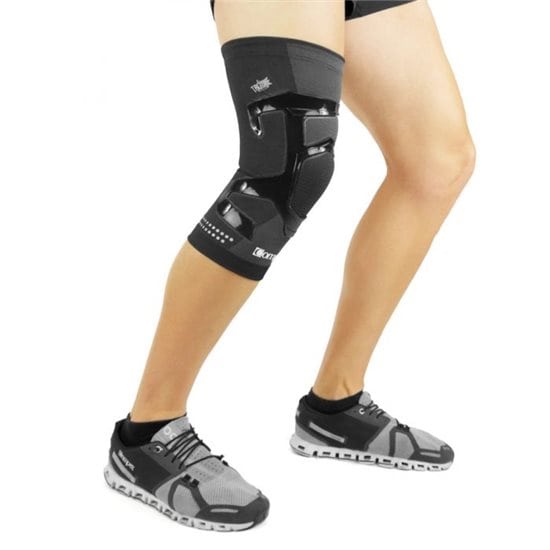
Ensuring your knee brace fits correctly is vital for optimal support on the slopes. Follow this step-by-step guide to wear your knee brace properly:
Step 1: Positioning
Start by positioning the knee brace correctly on your leg. Align the opening over your kneecap, ensuring a snug fit without compromising circulation.
Step 2: Strap securement
Fasten the straps firmly but not too tight. Achieve a balance that provides stability without causing discomfort. Adjust each strap to create uniform support around the knee.
Step 3: Bending and flexing
Bend your knee to a comfortable angle while fastening the brace. This mimics the movements you’ll make during skiing. It also ensures the brace accommodates your natural range of motion.
Tips for adjustment
- Regularly check and readjust the brace for a secure fit.
- Avoid over-tightening, as it may cause discomfort or hinder circulation.
- Customise the fit based on your skiing activity. Tighter for downhill, looser for cross-country.
Addressing concerns
Common misconceptions about knee braces often revolve around discomfort or interference with movement. Choose a knee brace that suits your activity and fits well. Regularly check for comfort and adjust as needed to ensure safety.
Expert Tips
Benefit from the wisdom of orthopaedic professionals and seasoned skiers:
Professional guidance
Seek advice from orthopaedic professionals to tailor your approach based on your needs and conditions. Their insights can guide you in choosing the right knee brace. Plus, they can help you utilise it effectively for your skiing activities.
Form maintenance
Maintain proper skiing form by focusing on posture and alignment. Your knee brace should complement your movements. This will help you sustain a balanced stance and reduce strain on the joints.
Technique adjustment
Adjust your skiing techniques to accommodate the added support of the knee brace. This may involve refining turns, controlling speed, and adapting to varying terrains. These ensure a seamless integration of the brace into your skiing style.
Strength building
Use your knee brace as a tool for strength-building exercises. Incorporate targeted workouts to enhance the muscles supporting your knees. Doing so can help promote overall joint stability and reduce the risk of injuries.
Consider exercises like leg raises, squats, and lunges in your routines. These workouts focus on the quadriceps, hamstrings, and calf muscles. They contribute to improved stability and reduced vulnerability to injuries. Always start with low intensity and gradually increase. Consult a fitness professional if needed.
Round-up
As you prepare to conquer the slopes, remember the role your knees play in the skiing experience. Choose a good knee brace, practise good form, and do strength exercises. These steps make skiing safer and more fun. With advice from pros and experienced skiers, you’ll feel confident on the mountains. Focus on knee health, make smart choices, and enjoy skiing without injuries.
Explore our diverse collection of knee braces, including hamstring supports, at Physioroom. Up next on your reading list: How to Tape a Knee: A Guide for Proper Knee Taping


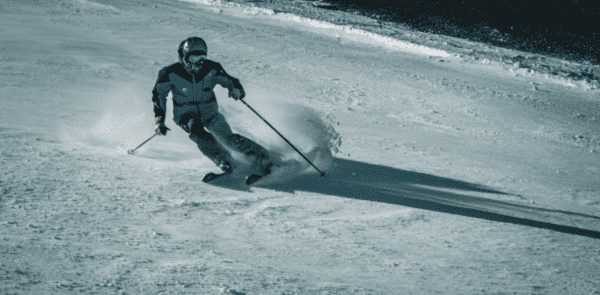
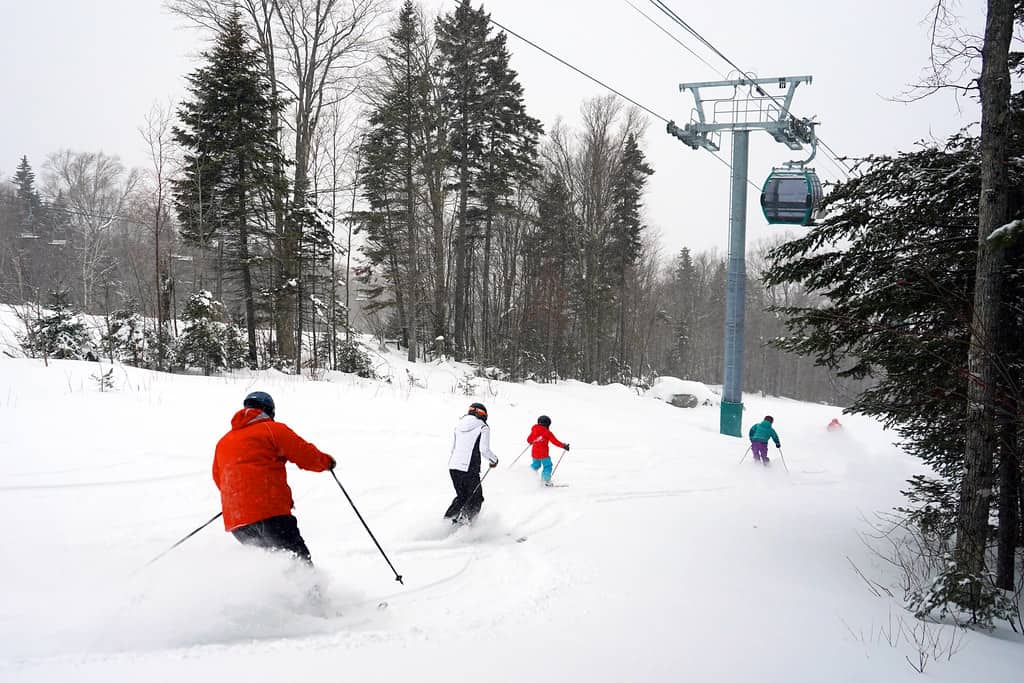 (
(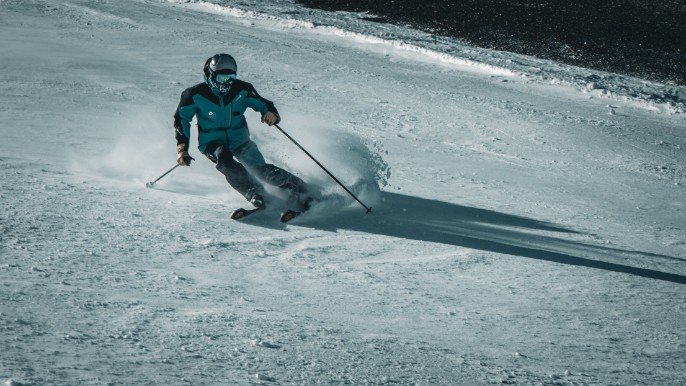 (
(